Daedalus, Icarus and Milner with Hawking
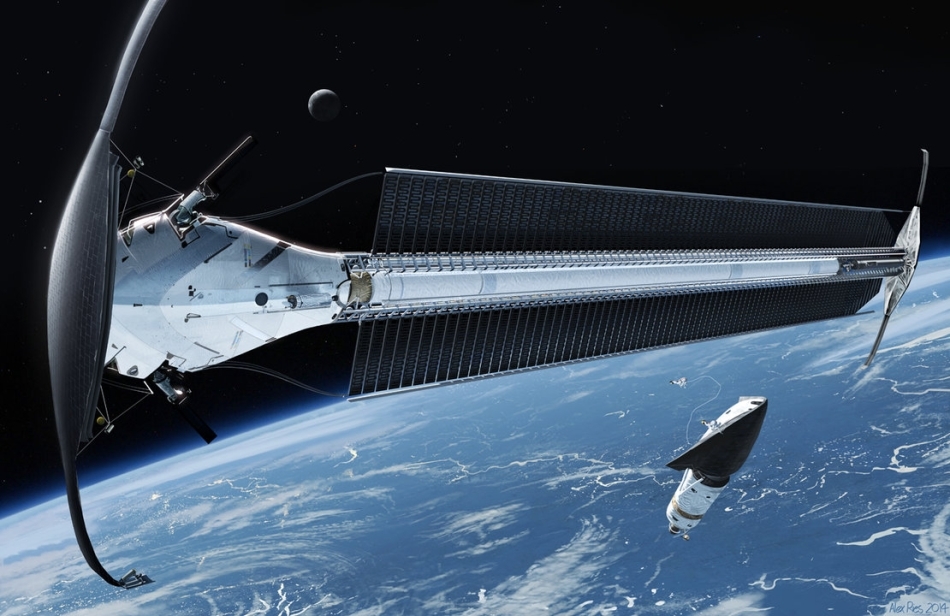
It has been more than a month since the general public announced the Breaktrough Starshot project - the idea of sending one-gram probes to Alpha Centauri. Now the dust has already settled a little, many have expressed themselves, some with support, some with criticism. I would like to compare this project with the already existing projects of interstellar probes, because they look, alas, far more rational than the proposal voiced by Milner and Hawking.
Formulation of the problem
Why hasn't humankind sent probes to nearby stars yet? In simple terms, the distances between star systems are so great that with the speeds with which we already know how to launch unmanned vehicles, they will fly for tens of thousands of years. For example, if the fastest of the apparatuses launched outside the solar system, Voyager-1, flew to Alpha Centauri, then 4.36 light years to the target at the current speed of 17 km / s, it would fly for about 77 thousand years. And if we want to fly faster, then we rest on the limitations of the rocket technologies used. Suppose we want to send a probe to Alpha Centauria weighing one ton (which is very little) and want it to fly for 100 years (which is very slow). For this we need to accelerate it to 13 000 km / s (only 0.04 light speed). The figure does not seem terrible, but if we accelerate the probe with the help of chemical engines on a hydrogen / oxygen fuel pair with the maximum specific impulse used now, then using the Tsiolkovsky formula, only the fuel, not taking into account the mass of engines and tanks, will require 4.5 * 10 1277 kilograms. The problem - the mass of the visible universe is estimated at 10 54 kg. That is, we will have about twenty times to replace each atom in the Universe with the entire visible Universe in order to obtain such a quantity of matter. Why did this happen? The fact is that existing rocket engines eject matter too slowly for interstellar travel. Imagine you are standing on a skateboard. If you have only tennis balls in your pockets, then, throwing them back, you will not go far. If you have a gun, or, better yet, an automatic rifle, then, by throwing out the substance with greater speed, you can go further.
Here I would like to give an example from YouTube
')
Chemical engines allowed us to get into orbit, losing ~ 97% of the mass along the way, very expensive to fly to the Moon and launch small unmanned vehicles to the outer planets of the Solar System, reaching Pluto in just 10 years. But for interstellar travel, we need other engines that will allow the substance to be discharged more efficiently, “free” traction of the sail or some other trick.
With such music, in the presence of large reserves of sarcasm, this video can be called an allegory of the current state of astronautics
Atomic Orion
In the 1950s, the Orion impulse atomic explosion concept was born in the United States, which was supposed to accelerate due to the explosion of nuclear bombs as aft. A special bomb was a directed atomic charge that was supposed to evaporate a tungsten disk, forming a cloud of high-speed plasma:
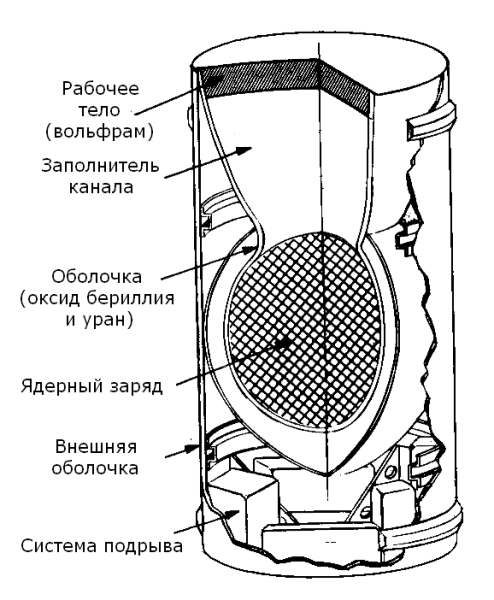
This cloud should have hit a two-stage shock absorber, which would take the impetus and accelerate the ship:
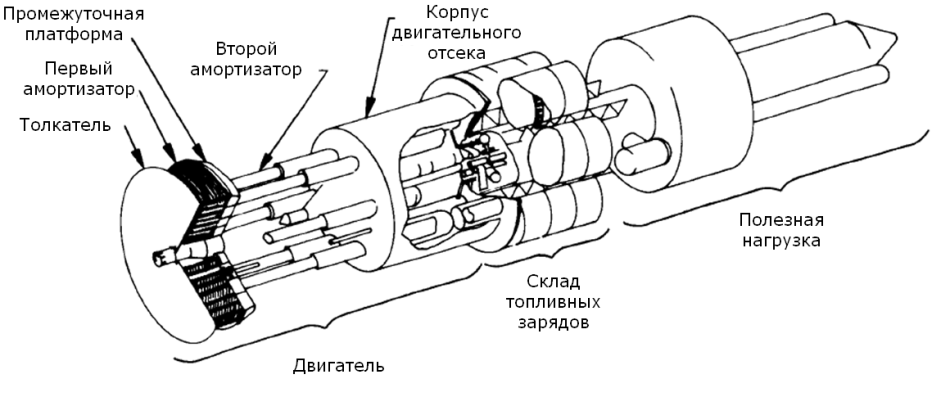
A scale model was successfully tested on conventional explosives, but an agreement to ban atomic testing in 1963, environmental problems of the project and categorical rejection by President Kennedy of the military version of Orion led to the closure of the project in the 1965 area. Paradoxically, Orion is the only interstellar spacecraft that can be built on existing technologies. According to different calculations, with different equipment weight and propulsion system parameters, a ship on such a burden can fit into a mass of less than a million tons, cost less than the annual US GDP and fly to a nearby star for a period from one hundred to a thousand years, which translates it from the category of completely unrealizable in the category of possible to be built by the collective efforts of mankind.
You can read more about the project and virtually fly it here .
Thermonuclear Daedalus
If you remember the myth of Daedalus and Icarus, then you know that, unlike the dreamer Icarus, Daedalus didn’t break the flight manual of the wings and flew to the goal quite successfully. Hence the name of the project of an interstellar probe, which could reach any of the nearest stars within a period not exceeding one hundred years, using existing or expected technologies in the near future. The project was developed by the British Interplanetary Society from 1973 to 1978, and the result was a ship weighing only 54,000 tons, of which 500 tons were occupied by the scientific payload, and 50,000 tons were fuel.
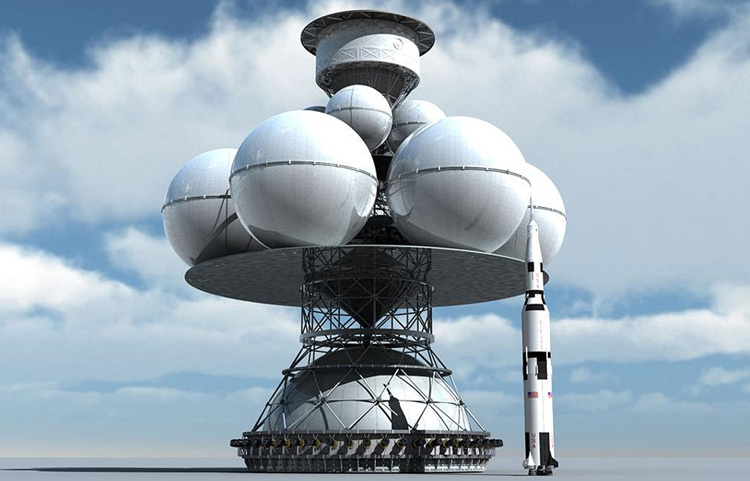
The propulsion system of the probe was supposed to use inertial thermonuclear fusion, one of the promising areas of controlled thermonuclear fusion. Fuel pellets from deuterium and helium-3 had to be ignited by electron beams, and the resulting plasma would fly through a magnetic nozzle, creating cravings. Daedalus was supposed to fly for a total of 50 years, with a cruising speed of 36,000 km / s (12% of the speed of light). The calculation shows that a specific impulse in the region of 3 million seconds was expected from the engine, which is a thousand times more than that of the existing engines. The efficiency of the engine was compensated by a small pitch - two probe levels had to work for a total of almost four years, creating an average acceleration of 29 cm / s 2 or 0.03 g.

The second stage was a large and complex spacecraft. To protect against micrometeorites, a collision with which would be dangerous at a speed of 12% light, a 50-ton beryllium disk was located in front. Larger particles that could penetrate the disk should have been encountered by autonomous robots that would fly at a distance of 200 km in front of the probe. The robot was supposed to release a cloud of dust that would deflect or destroy a dangerous object at such a high speed. Behind the disk there were a five-meter optical and twenty-meter radio telescope. In addition, the Daedalus had to carry autonomous probes that would be dropped, starting seven years before the goal, and diverging to the sides. The probe and autonomous vehicles were supposed to fly through the target system, without stopping, and transmit the collected information using the main probe as a repeater, and the forty-meter engine nozzle as an antenna. Another interesting feature was the autonomous "caretaker" robots that were supposed to fly on the main probe and repair it.
Despite the high elaboration of the project, the assessment of the availability of the main technology - the engine was too optimistic. Controlled thermonuclear fusion is still not conquered by mankind, and it’s not a fact that an inertial synthesis engine will end up being the best choice.
What would build on the ISS?
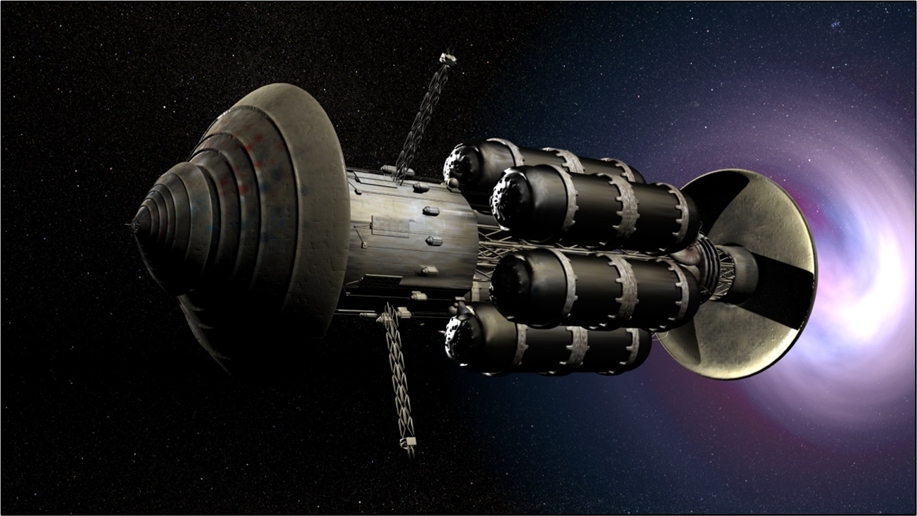
In the 1980s, when the United States was going to build its orbital station Freedom, the concept of an interstellar probe, which could be built at this station, was born. The Longshot project was smaller than the Daedalus, and had to have an initial mass of 396 tons (for comparison, the ISS is now heavier). The propulsion system resembled the “Daedalus”, used the same fuel and also proceeded from the need to create an engine a thousand times more efficient than the existing ones. Longshot was supposed to fly to Alpha Centauri B 100 years, which made it possible to reduce the speed three times relative to the Daedalus and deliver to the target approximately 30 tons, almost ten times more in relative numbers than the Daedalus. The need to minimize the accelerated mass led to another engineering solution - instead of two steps, Longshot dumped empty tanks.
Like the Daedalus, Longshot is now waiting for the invention to be a thousand times more efficient engine.
"Icarus"
The British interplanetary society did not stop the development of interstellar probes. Since 2009, the Icarus project has been developed as a new version of Daedalus with possible improvements on new technologies. Some sources write about the closure in 2011, but this is not true - in 2015, Icarus Interstellar successfully raised $ 22,000 to Kickstarter for the Starship Congress conference. The development has not yet been completed, so the final design has not yet been determined, but, according to available information, the developers retain reliance on the engine on inertial fusion.
"Ting-Ting"

Of the many other little-known projects, I would also like to highlight Tin-Tin , in which it is proposed to send stars to the stars. The size of 3U (3 cubes 10x10x10 cm) fits an interstellar probe that should be able to reach the nearest star in 25,000 years, three times faster than the now flying Voyagers and Pioneers. A period of 25,000 years can hardly be called acceptable, but the probe is based on already existing technologies and, at a minimum, can be useful for studying the neighborhoods of the solar system. The first cube, as envisioned by the developer, will contain a propulsion system at the field effect (FEEP, this one is already on the LISA device). Very small engine thrust is compensated by high specific impulse. The second cube contains a radioisotope generator and a Stirling engine, which together produce energy. And the third - a useful scientific burden. Also, the probe is equipped with a small solar sail, which adds "free" speed from the Sun and serves as an antenna.
Breakthrough starshot
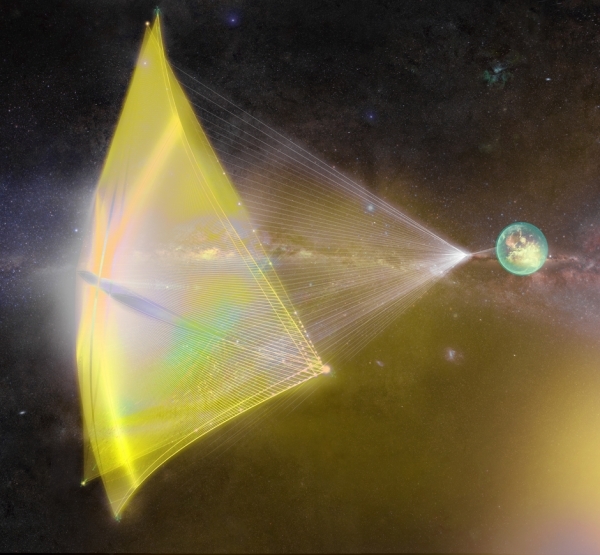
And finally, a fresh project from Milner and Hawking. The gigawatt class laser system should accelerate a one-gram probe with an acceleration of 20,000 g for ten minutes so that it can reach Alpha Centauri in 20-30 years. A physical analysis of the problems of the project was made in the article “Two for Physics to Milner with Hawking” , if you have not read it yet, be sure to read it. Personally, I do not like the seemingly almost intentional adventurousness of the project. Why ten minutes to accelerate a one-gage probe with a gigawatt laser with an acceleration of 20,000 g, if it is much easier to accelerate a kilogram probe with an acceleration of 1 g by a megawatt setting for months, and, if necessary, for years? The accuracy of pointing will increase from a small acceleration, the kilogram probe is much easier to do, and against the background of the flight duration of 30 years, the time to accelerate is still incomparably less.
In general, I get the feeling that the adventurous space projects are getting bigger. Perhaps, in vain there is no public condemnation of the failed Mars One project? I would not be surprised if, after a few years, the project of assembling an interstellar probe in a garage collects money by crowdfunding, until they also discredit astronautics and crowdfunding. However, there is another option that I unwittingly became too conservative and mistaken. But in this case, I will only be happy to make a mistake.
Source: https://habr.com/ru/post/368953/
All Articles